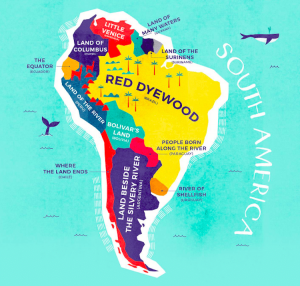
The image above represents the workflow of the Localization Project Management Office that I and four other colleagues built together over 15 weeks. At first glance, one may ask how we needed 15 weeks to compile what looks like a basic workflow checklist, but in reality this workflow will determine the type of LPM office we want to be.
There are three reasons why this is true:
- Our project managers (PMs) will be managing multiple projects simultaneously and they need really good checklists and documented work structures to ensure that nothing falls through the cracks.
- An effective workflow will help reduce our PMs stress and assist them in learning their job faster.
- A clear workflow will aid the client in learning to speak our language. This is crucial to establishing and maintaining a healthy client relationship.
As my team was new to Localization Project Management (LPM), it took 15 weeks of confusion, frustration, success, and collaboration for us to obtain and understand the insights mentioned above.
This process was complicated by two things. The first, our course syllabus stated the following:
“Obviously not all translation and localization projects are alike, so students will be asked to think outside the box for novel solutions to potentially complex project requirements.”
Being a first-year student, my understanding to what extent and how projects would differentiate was non-existent.
Second, this is an image of a basic localization production workflow that was shown in our second week of class.

I remember thinking to myself: “This is a basic workflow???” Being able to visualize the different stages in this image was nearly impossible.
At the same time, seeing this image I knew my team would have to create an LPM Office capable of maintaining consistent high quality standards that would be carried out through all stages of the localization workflow.
In order to shed light on how my team executed this, I will focus on the following areas:
- Establishing team identity
- Managing expectations
- Strategies for project planning and monitoring
Establishing Team Identity
In one of our first meetings, I remember thinking it’s imperative our group avoid dividing up the work without any proper discussion as to what is being divided. For example, in the Translation, Editing, and Proofreading phase (TEP), we would want to avoid designating someone to write out our Translation checklist without discussing as a group what were the goals for said checklist. I realize that there may be times where ample discussion must be curtailed for the sake of delivering the project on time. However, given that this was a project, I found it imperative that everyone not only understand what we were doing, but why we were doing it. For one, this would help build accountability, not in the sense of blame, but rather that every team member would be accountable for finding ways to improve our workflow. Secondly, understanding why we’re doing what we do, allows us to adjust our actual thought process vis-a-vis our workflow.
Lastly, I wanted to create an environment in which every phase of building our workflow was a new opportunity to learn about how to think.
Managing Expectations
In one of our earlier class discussions, our professor brought up the term “critical path,” or the “path of least resistance.” That is, having a workflow where everything is moving forward. This proved to be difficult, primarily because it was hard reconciling identifying what is critical to a successful localization workflow with weeding out what was unimportant. There was no reference experience any of us could turn to to save us from getting bogged down in over analyzing every nitty-gritty detail. We determined that meeting once a week and outlining the goals of each week’s assignment would allows us to focus on achieving the right results.
Strategies for Project Planning and Monitoring
One piece of advice I would give my team if starting this project again, would be implementing consistent naming standardization for files from the very onset of the project. In hindsight having standardization is quite obvious, but I cannot stress this enough. Proper naming of files saves time, keeps the deliverables moving forward, and reflects well on the professionalism of our LMP office.
Final Thoughts
After finishing this project, I can now visualize the various steps that make up basic localization production workflow image above. However, this is merely the beginning of my journey in localization, the next step is to take the lessons I’ve learned during this project and link them to future actions.


